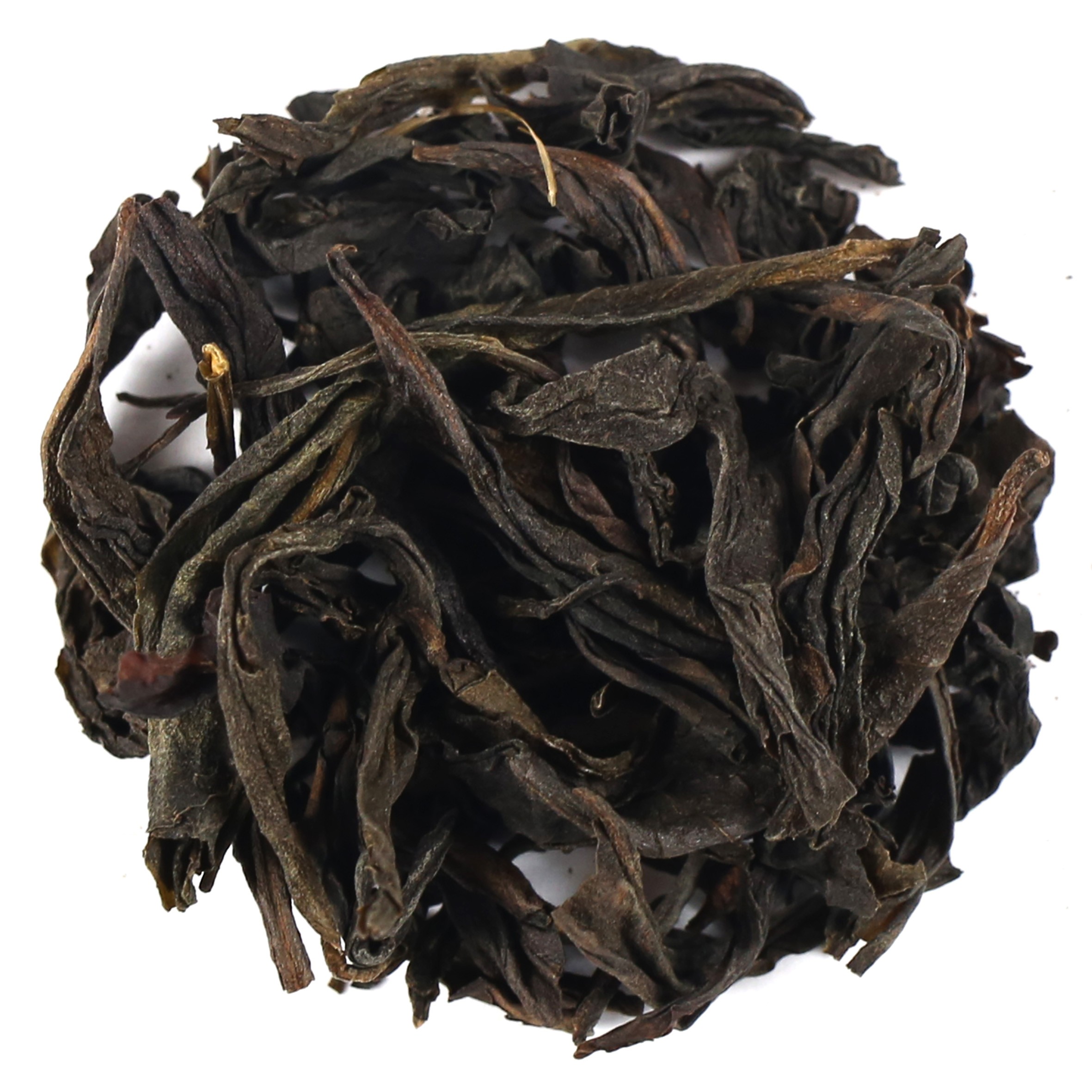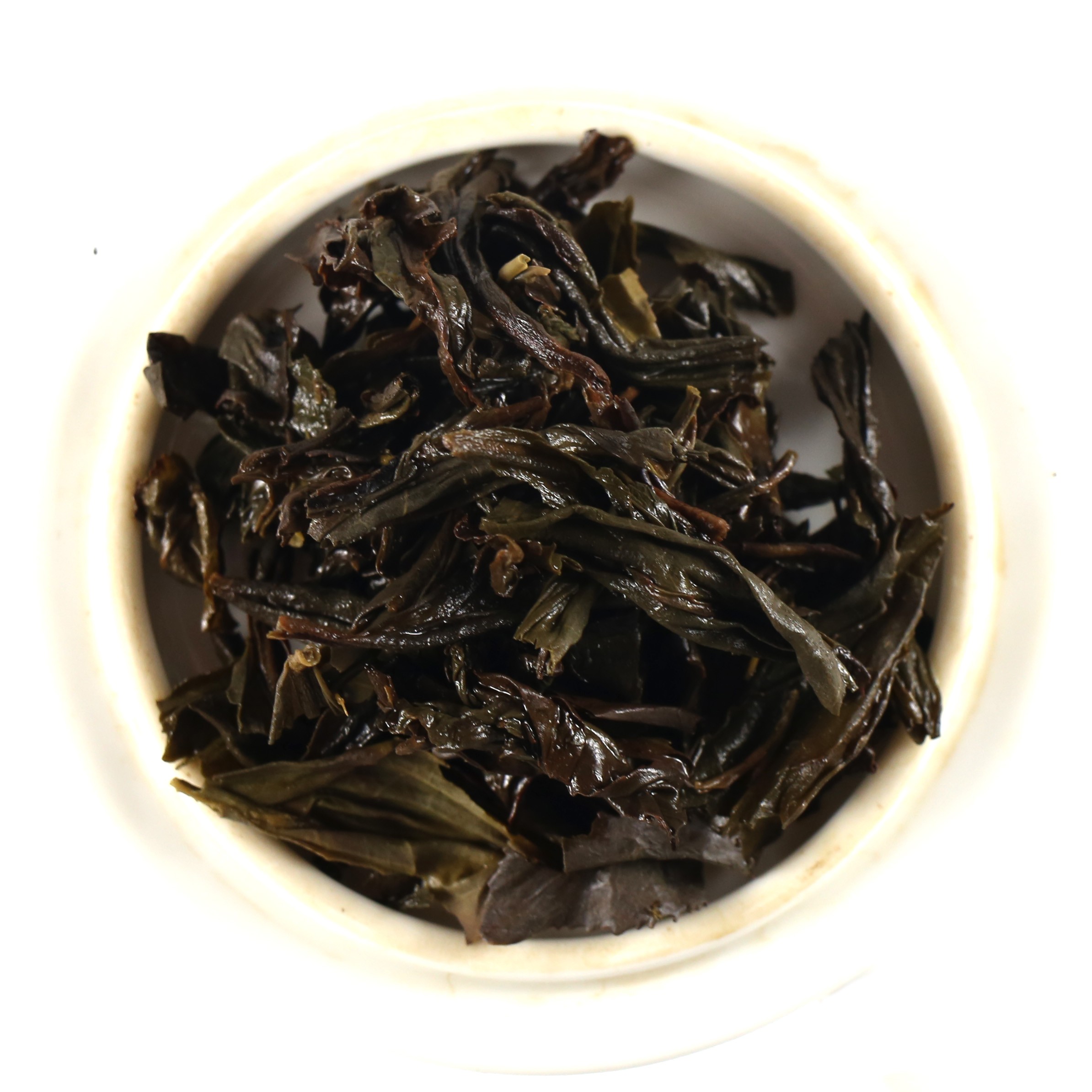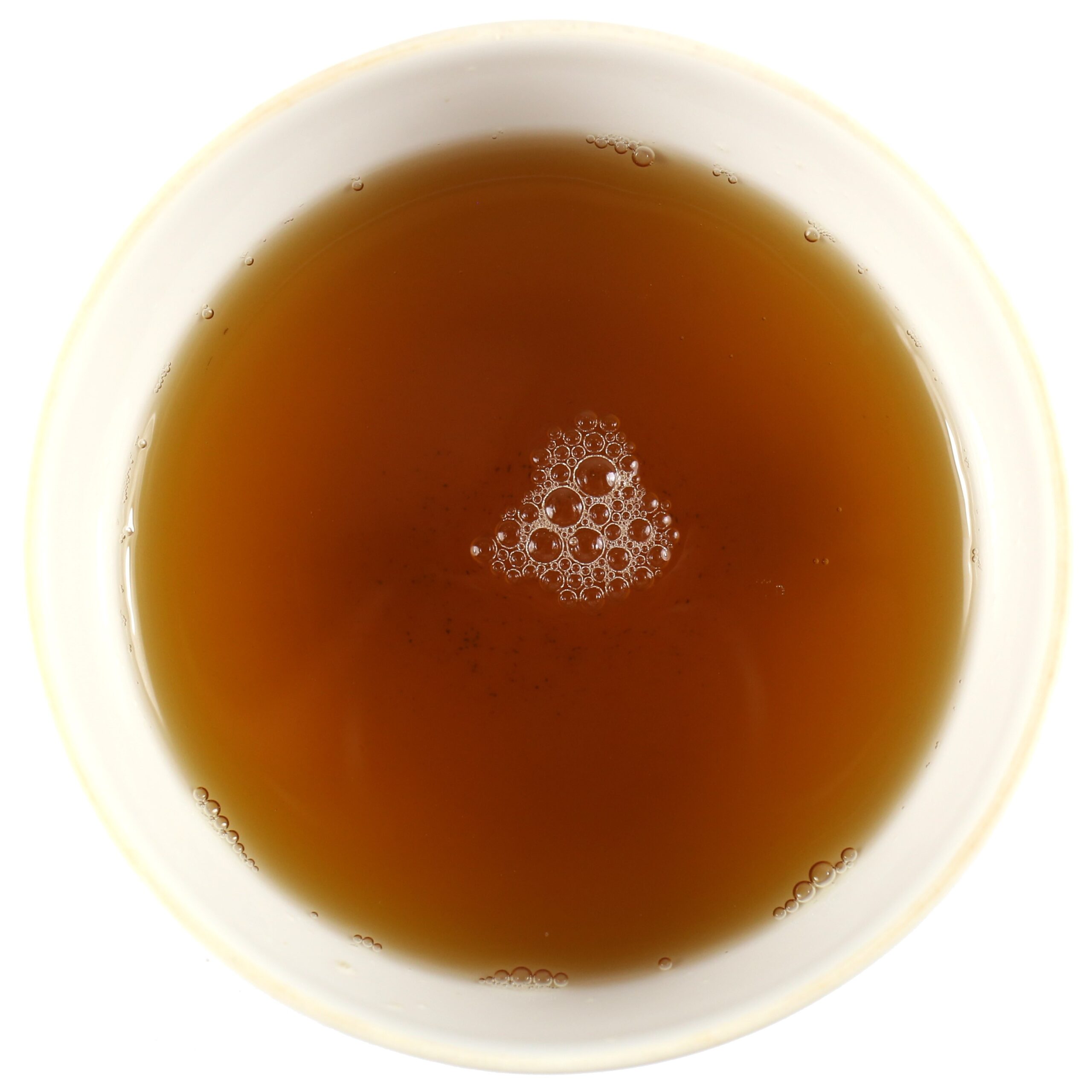Oolong Brewing Guide

1 Teaspoon
Add 1 teaspoon per person and one for the pot.

80⁰c - 90⁰c
Boil using fresh water, at a temperature of 80⁰c - 90⁰c.

2 - 3 Mins
Steep for 2 - 3 minutes, depending on personal preference.
About Product
-
Product Description
Da Hong Pao Tea is the King of Oolong. It is popular among connoisseurs the world over, consisting of heavily oxidised leaves. Such a trait is considered relatively uncommon in Oolong Tea varieties. It’s uniqueness doesn’t stop there. Perhaps most important is the fact that we pack it fresh to order here at our Kent-based factory. This ensures not only quality but also consistency.
What is Da Hong Pao Tea?
Da Hong Pao Tea, also known as “China Rock Tea” and “Red Robe,” comes from the Wuyi Mountains of Fujian Province, China. There are two legends associated with its creation. The first involves a scholar travelling to the city for an imperial examination. When he passed through the mountains, however, he fell seriously ill and thus took refuge with local Buddhist monks at Tian Xin Temple.
The monks offered the man Da Hong Pao Tea leaves in order to restore his health. It worked and, as a result, the scholar went on to pass his exam. He eventually returned to the temple and presented the monks with a red robe awarded to him for passing. This, he told the monks, could cover the Tea pushes during the winter for protection – hence the name, Red Robe Tea.
The second story starts with the mother of a Ming Dynasty Emperor. Like the former tale, she became unwell while passing through the Wuyi Mountains. She, too, was healed by drinking Da Hong Pao Tea. When the Emperor heard of his mother’s recovery, he sent red robes to cover the Tea bushes as a sign of gratitude. Whichever legend you preferred, you can retell it to friends with a cuppa in hand.
What Does Da Hong Pao Taste Like?
But first, you’ll want to know, “What does Da Hong Pao taste like?” The answer, simply, is exquisite, indeed extraordinary. Expect nothing but wholesome and delicious smoky notes well-suited to those who enjoy a hearty beverage. There exists, too, an overall full-bodied and toasty character, combined with a woody aroma and, ultimately, a delectable finish.
Da Hong Pao Caffeine Content
Da Hong Pao Oolong Tea sits between Green Tea and Black Tea when it comes to its caffeine content. This is because of the processing of the leaves, specifically its oxidation, which differs depending on the Type of Tea you choose. Here you have an infusion with around 37-mg of caffeine per 8-oz cup – enough, hopefully, to get you out of bed in the morning. Why not find out today?
How to Brew Da Hong Pao
1, Put Leaf Tea into a Tea Infuser or Filter (both available here).
2, Place the Tea-filled accessory in a mug or cup.
3, Boil fresh water and allow it to cool to temperatures between 80 and 90°C.
4, Da Hong Pao brewing should be between two and three minutes. Any longer and you risk creating an unpleasantly bitter taste.
How to Serve: Consider honey or lemon. Alternatively, serve without additions.
Tasting Notes: Imparts smoky notes and toasty undertones.
Da Hong Pao Tea Benefits
According to the latest scientific research, Da Hong Pao benefits can alkalise the digestive tract, reducing inflammation in those with acid reflux and ulcer problems.
Additionally, some experts believe that it is antiseptic, meaning it could clear harmful bacteria in the stomach. And if that wasn’t enough, there are suggestions that it can improve skin health and reduce diabetes risks.
-
Delivery Information
We offer reliable delivery services through Royal Mail to ensure that your orders reach you on time.
Here are the main points you should be aware of:
- Standard UK Delivery: £3.95 excluding delivery charge.
- Delivery Times: Orders are processed and dispatched within 2-5 working days but they may take longer during busy times. It is worth noting that all our orders are packed by hand in order to maintain the quality.
- Free Delivery: We are delighted to provide free shipping for UK orders over £35*. Moreover, customers from Europe can enjoy free shipping for any purchase above €75*. Furthermore, we offer free delivery in the USA for all purchases exceeding $125*. Please note terms and conditions may apply.
- Tracking: When your package is sent you will receive a tracking number via email so as to keep tabs of its progress.
International Shipping
We do ship worldwide meaning our products can be accessed by anyone around the world.
Here are some important details:
- Delivery Times: International deliveries vary based on destination, generally taking between 7-14 working days.
- Shipping Costs: International shipping costs are calculated at checkout based on your location and weight of your order. View full delivery charges for your location.
- Customs and Import Duties: Remember customs or import duties may exist depending on regulations in your country; these charges are borne by the customer.
Returns Policy
Your satisfaction is our top priority, however if for any reasons you’re not completely happy with your purchase, simply follow our returns procedure:
- Eligibility: Items returned within 30 days of receipt must remain unopened and in their original condition.
- Process: In order to return an item contact our customer service department using your unique order number after which detailed instructions will be given concerning returning them back to us securely.
- Refunds: Our aim is to refund you within 5-7 working days upon successful reception of returned goods. The refund amount will be credited to your original payment method.
For any other Enquiries or help please contact our Customer Support Team always at your service.
-
Product Reviews

 Loose Leaf Tea
Loose Leaf Tea Pyramids
Pyramids Tea Bags
Tea Bags Africa
Africa Assam
Assam Ceylon
Ceylon Chinese
Chinese Darjeeling
Darjeeling European
European Indian
Indian Japan
Japan Nepal
Nepal South East Asia
South East Asia Ayurveda Tea
Ayurveda Tea Black Tea
Black Tea Chai Tea
Chai Tea Flowering Tea
Flowering Tea Fruit Tisanes
Fruit Tisanes Green Tea
Green Tea Herbal Tea
Herbal Tea Matcha Tea
Matcha Tea Oolong Tea
Oolong Tea Organic Tea
Organic Tea Pu erh Tea
Pu erh Tea Rooibos Tea
Rooibos Tea White Tea
White Tea Asian Coffee
Asian Coffee Caribbean Coffee
Caribbean Coffee Central American Coffee
Central American Coffee South American Coffee
South American Coffee Coffee Blends
Coffee Blends Decaffeinated Coffee
Decaffeinated Coffee Espresso Coffee
Espresso Coffee Ethically Sourced Coffee
Ethically Sourced Coffee Flavoured Coffee
Flavoured Coffee Organic Coffee
Organic Coffee Single Origin Coffee
Single Origin Coffee Chocolate 1
Chocolate 1 Chocolate 2
Chocolate 2 Chocolate 3
Chocolate 3 Chocolate 4
Chocolate 4 Chocolate 5
Chocolate 5 Chocolate 6
Chocolate 6 Chocolate 7
Chocolate 7 Chocolate 8
Chocolate 8 Chocolate 9
Chocolate 9 Loose Tea Filters
Loose Tea Filters Tea Accessories
Tea Accessories Tea Bricks
Tea Bricks Tea Caddies
Tea Caddies Tea Caddy Spoons
Tea Caddy Spoons Tea Gift Ideas
Tea Gift Ideas Tea Infusers
Tea Infusers Tea Strainers
Tea Strainers




